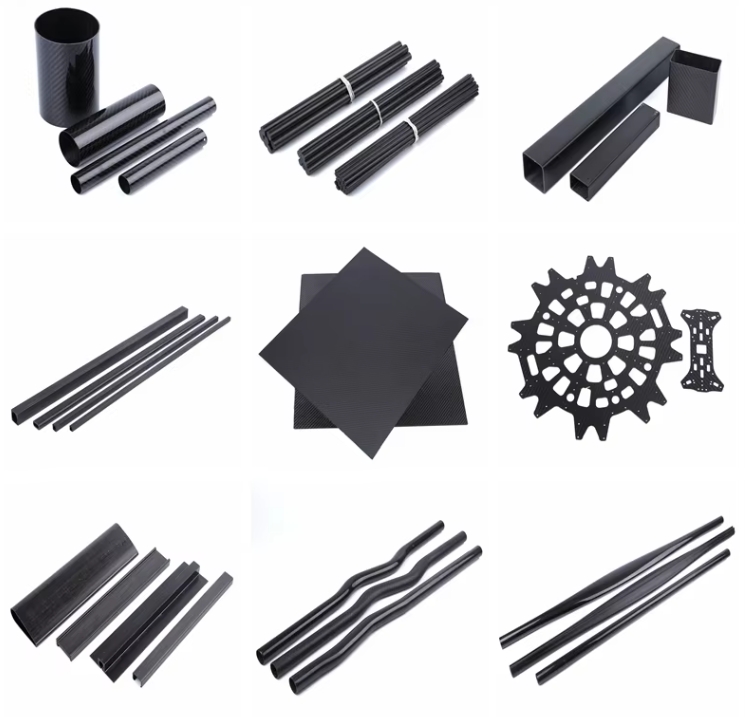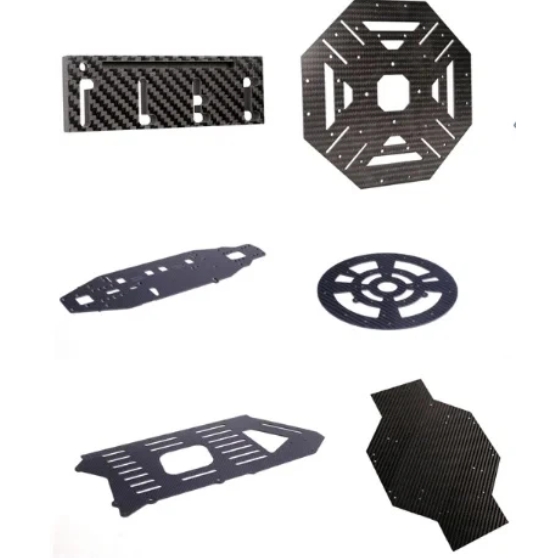In the brilliant starry sky of materials science, carbon fiber stands out as a dazzling new star. With its unique and outstanding performance, it has sparked waves of transformation in numerous fields and is hailed as “black gold”. From planes soaring through the sky to cars speeding by, and to sports equipment that helps athletes push their limits, carbon fiber is everywhere, continuously bringing unprecedented innovation and development to various industries.
Aerospace: Lightweight “Wings” Breaking Through the Sky
The aerospace field has extremely strict requirements for material performance. Every reduction in weight may translate into fuel savings, an increase in range, and an improvement in performance. Carbon fiber composite materials, with their characteristics of low density, high strength and high modulus, have become the “darling” of the aerospace field.
In the field of civil aviation, the Boeing 787 Dreamliner and the Airbus A350 XWB can be regarded as exemplary cases of carbon fiber application. The proportion of carbon fiber composite materials used in the Boeing 787 exceeds 50%, including key parts such as wings and fuselages. This has significantly reduced the aircraft’s weight. Compared with traditional aluminum alloy aircraft, its fuel efficiency has increased by approximately 20%, greatly lowering the operating costs of airlines. The proportion of composite materials in the Airbus A350 XWB has reached as high as 53%. The wings made of carbon fiber composite materials not only reduce weight but also improve aerodynamic performance, making the flight more stable and efficient.
In the field of spacecraft, carbon fiber also plays a crucial role. Satellites, rockets and other spacecraft are extremely sensitive to weight. The application of carbon fiber composite materials can effectively reduce structural weight, enhance payload capacity and lower launch costs. For instance, the structural frames of some satellites are made of carbon fiber, which not only ensures the stability of the structure but also significantly reduces the weight, enabling the satellites to carry more scientific instruments and perform more complex tasks.
Automobile manufacturing: The dual pursuit of speed and energy conservation
The automotive industry is moving towards lightweight, high performance and low energy consumption, and carbon fiber plays an indispensable role in this process.
Supercar brands such as Ferrari and Lamborghini have long widely applied carbon fiber in the manufacturing of car bodies. Take Ferrari as an example. Some of its models adopt carbon fiber monocoque technology, which significantly reduces the weight of the vehicle body while greatly enhancing its rigidity. This not only enhances the vehicle’s handling performance, enabling drivers to control the vehicle more precisely, but also improves acceleration performance and fuel economy.
In the field of electric vehicles, the application of carbon fiber is of extraordinary significance. The driving range of electric vehicles has always been a focus of consumers’ attention, and reducing the vehicle weight is one of the effective ways to increase the driving range. The BMW i3 and i8 feature all-carbon fiber bodies, which are hundreds of kilograms lighter than traditional metal bodies. This effectively enhances the battery’s utilization efficiency and increases the driving range. In addition, carbon fiber can also be used to manufacture automotive battery boxes, which can not only reduce weight but also provide good protective performance, ensuring the safe and stable operation of the battery.
In addition to vehicle bodies and battery boxes, carbon fiber is also widely used in automotive parts, such as water pump rotors, casings, thermostats, impellers, etc. After these components are made of carbon fiber composite materials, not only is their weight reduced, but also the precision and durability of the components can be improved, and the overall energy consumption of the vehicle can be lowered.
Sports goods: Helping athletes challenge their limits
The application of carbon fiber in sports goods has brought athletes better equipment and helped them challenge human limits.
Golf clubs are one of the earliest fields where carbon fiber was applied in sports goods. The carbon fiber shaft features light weight, high strength and high elasticity, which enables players to exert force more easily when swinging, thereby enhancing the speed and accuracy of their shots. For instance, TaylorMade’s Qi10 LS golf club features a multi-layer carbon fiber hyperbolic face design, with carbon fiber covering 97% of the total area of the club crown, achieving excellent weight distribution and fault tolerance, and helping players enhance their hitting performance.
In the field of bicycles, carbon fiber bicycles are highly favored by professional riders and cycling enthusiasts for their ultra-light weight and excellent rigidity. The XC bike with full suspension launched by Xidesheng is made of T1100 carbon fiber material. The frame weighs only 1100g and the entire bike weighs 9.4kg. While ensuring strength, it significantly reduces weight, making the bike more flexible to handle in complex terrains such as mountain off-roading, and improving acceleration and climbing performance.
Carbon fiber is also widely used in racket products such as tennis rackets and badminton rackets. By adopting different carbon fiber weaving methods and composite material formulas, rackets can achieve a better lightweight design, while enhancing the strength and elasticity of the rackets. This enables athletes to more precisely control the force and direction when hitting the ball, improving the power and stability of the shot.
In addition to the above-mentioned fields, carbon fiber also has broad application prospects in energy, medical care, electronics and other fields.
In the energy sector, carbon fiber can be used to manufacture wind turbine blades. With the continuous growth of global demand for clean energy, wind power generation, as an important renewable energy source, has developed rapidly. Carbon fiber blades have the advantages of light weight, high strength and corrosion resistance. They can maintain stable operation in strong wind conditions, improving the efficiency and reliability of wind power generation.
In the medical field, carbon fiber composite materials can be used to manufacture medical devices such as prostheses and orthoses. These products feature light weight, good comfort and high fit, which can provide patients with a better user experience and help them restore their physical functions more effectively.
In the field of electronics, carbon fiber can be used to manufacture the casings of electronic devices. Due to its excellent electrical conductivity and electromagnetic shielding performance, it can effectively protect the internal circuits of electronic devices from external electromagnetic interference, while reducing the weight of the devices and enhancing the portability of the products
Carbon fiber, as a high-performance material, has demonstrated tremendous application potential in various fields due to its unique performance advantages. With the continuous advancement of technology and the gradual reduction of production costs, carbon fiber will be widely applied in more fields, constantly bringing innovation and transformation to various industries and making our lives better.

